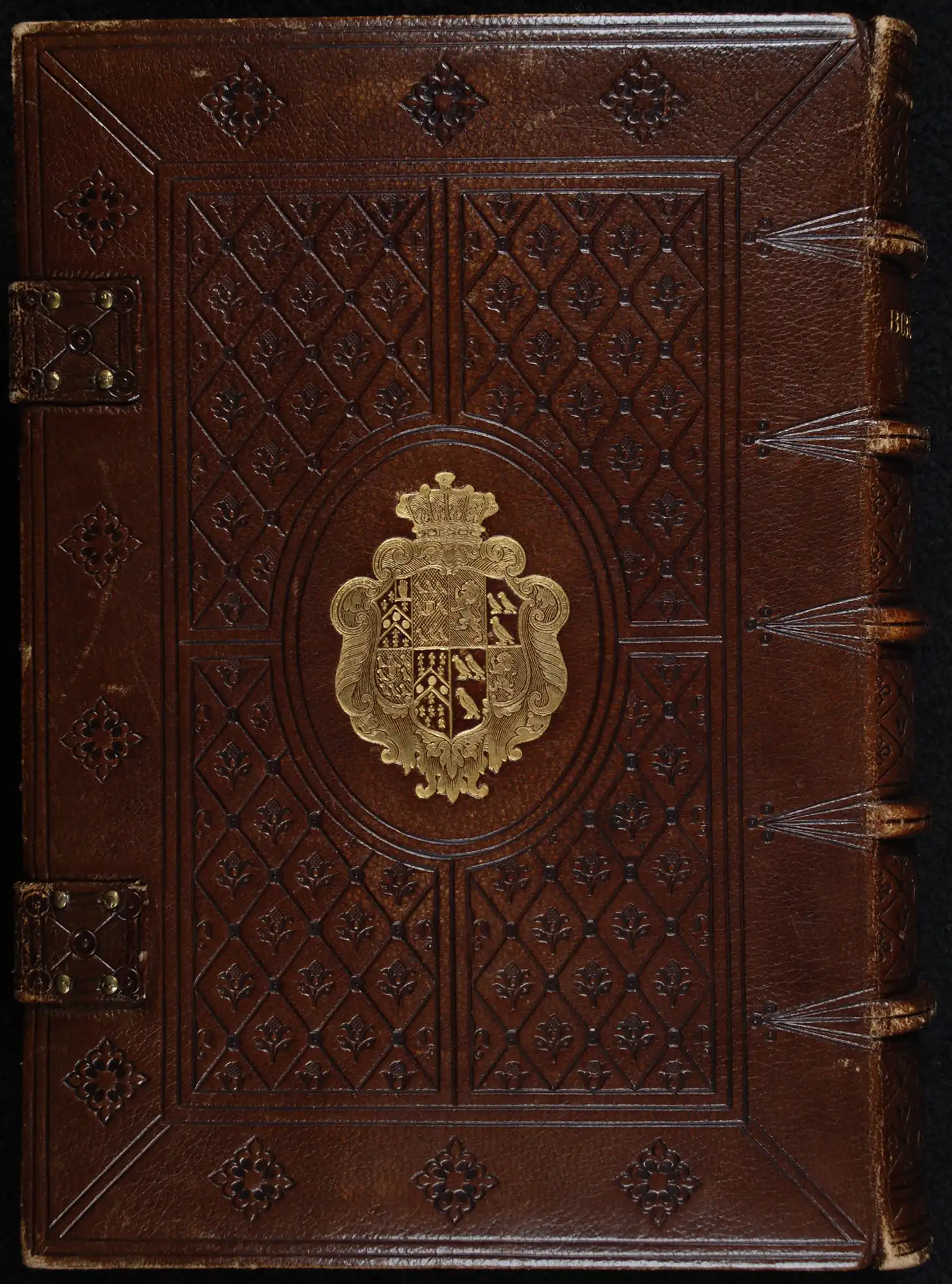Case 2
- Medieval Manuscripts 1

Bible, in Latin. England (probably Oxford), thirteenth century. Reed MS1.
A.H. Reed’s original gift of 1948 included five manuscript items, of which two were vellum medieval manuscripts. The Reed Medieval and Renaissance Manuscripts Collection today numbers 12 bound manuscripts and more than 65 leaves and fragments, ranging in date from the tenth to the sixteenth century. It is the second largest collection of its type in New Zealand.
Made in England during the second half of the thirteenth century, this manuscript Vulgate Bible of 369 vellum leaves is the Reed Collection’s oldest bound manuscript. It was written in England and was still in use there into at least the fifteenth century.
In the mid-nineteenth century it was rebound into its present dark-brown blind-stamped morocco over wooden boards. It was bound by Francis Bedford (1799-1883) for John Cust, Baron Brownlow (1779-1853) of Belton House, Lincolnshire, and bears the Brownlow arms in gilt on the sides, with brass claps and catches, and gilt edges.
It was purchased for the Reed Collection from the London book dealer Henry Hyman in 1954.

Book of Hours, in Latin and French. Northern France (perhaps Rouen), late fifteenth century. Reed MS8.
This French prayer book on vellum, dating from ca. 1480-1500, is richly decorated. It contains more than fifty miniature paintings, and every page is filled with borders of geometric designs containing flowers, vines, fruit and the occasional fantastical creature, figure, animal, or insect. The use of gold leaf in the decoration properly defines this as an ‘illuminated’ manuscript.
The opening section contains twenty-four small rectangular miniatures in the vertical borders of the calendar pages, which include signs of the zodiac and the labours of each month. The manuscript is open at the final page of the Calendar (December) on the left, and the Four Evangelists and opening of the Gospel Readings on the right.
This manuscript was purchased by A.H. Reed for £250 from the bookseller J.G. Commin of Exeter in 1949 and presented to the Library in the same year.

Book of Hours, in Latin and French. Northern France (perhaps Rouen), late fifteenth century. Reed MS8.
Open image in new window

Book of Hours, in Latin. Netherlands, ca. 1450. Reed MS12.
Books of Hours were small portable prayer books for laypersons, a counterpart to the much more extensive breviaries for the clergy. The core of a Book of Hours consists of a calendar of saints, the Hours of the Virgin, the Penitential Psalms with the Litany of the Saints, and the Office of the Dead.
This small fifteenth-century book of hours is bound in eighteenth century blind-stamped calf. It was owned by Alexander Boswell (1706-82), judge and eighth Laird of Auchinleck, and subsequently his son, James Boswell (1740-95), biographer of Samuel Johnson. It was purchased from Sotheby’s for the Reed Collection in 2009.


